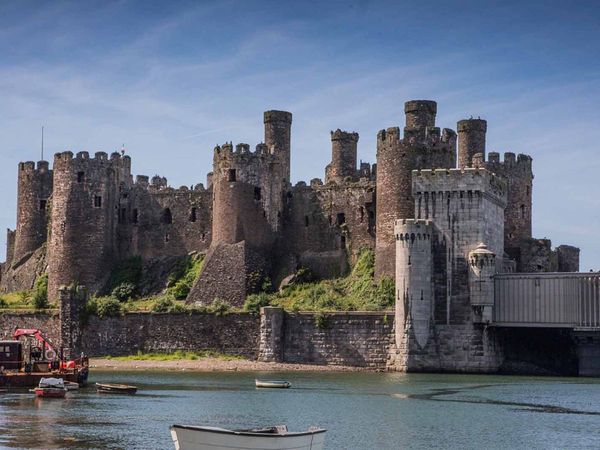
I am thrilled to share my knowledge about Conwy Castle, one of the most magnificent medieval fortresses in the United Kingdom. Located in North Wales, Conwy Castle was built by King Edward I in the late 13th century as part of his campaign to subdue the Welsh and establish English dominance over the region. This impressive structure has a rich and storied history, full of intrigue, warfare, and political machinations.
The construction of Conwy Castle began in 1283, shortly after King Edward I conquered Wales. The king was determined to establish a series of strongholds along the Welsh coast to maintain English control over the newly conquered territory. Conwy Castle was one of the most important of these fortresses, designed to guard the River Conwy and the strategic trade route between North Wales and England. The castle was built by Master James of St. George, a renowned military architect who was also responsible for the construction of other significant castles in Wales, such as Caernarfon and Harlech.
Conwy Castle was built on a rocky outcrop overlooking the river, with commanding views of the surrounding countryside. The castle is a marvel of medieval engineering, with massive walls, towers, and battlements designed to withstand attack from enemy forces. The castle’s design reflects the latest military technology of the time, including concentric walls, arrow slits, and a deep moat. The castle also featured luxurious accommodations for the king and his retinue, including a grand hall, private apartments, and a chapel.
The construction of Conwy Castle was a massive undertaking, involving thousands of workers and millions of pounds of investment. The castle was completed in just four years, a testament to the efficiency and skill of the builders. The castle’s strategic location made it a vital center of military and political power, and it played a significant role in the conflicts that defined Welsh-English relations in the Middle Ages.
One of the most interesting aspects of Conwy Castle’s history is its connection to King Edward I, who was deeply invested in the castle’s construction and upkeep. Edward was a formidable monarch, known for his military prowess, political acumen, and ruthless determination. He was also a patron of the arts and a lover of luxury, and he spared no expense in creating lavish living quarters within the castle’s walls. Edward used Conwy Castle as a base of operations for his military campaigns in Wales, and he often stayed there for extended periods of time, entertaining guests and conducting business.
Despite its impressive defenses, Conwy Castle was not impervious to attack. In 1294, the Welsh rebelled against English rule, and the castle was besieged by forces led by Madog ap Llywelyn, a Welsh prince. The siege lasted for months, with the defenders of Conwy Castle eventually emerging victorious. However, the castle suffered significant damage during the conflict, and it took several years to repair the damage.
Over the centuries, Conwy Castle passed through the hands of various monarchs and nobles, and it played a role in many of the key events of Welsh and English history. Today, Conwy Castle is a popular tourist destination, attracting thousands of visitors each year. The castle has been recognized as a UNESCO World Heritage Site, and it is considered one of the finest examples of medieval military architecture in the world.
In conclusion, Conwy Castle is a true marvel of medieval engineering, a testament to the military might and political ambition of King Edward I, and a vital piece of Welsh and English history. Its impressive walls, towers, and battlements tell the story of a time when conflict and conquest defined the relationship between the two nations. Today, Conwy Castle stands as a reminder of the past and a symbol of the enduring power and beauty of medieval architecture.









Sé el primero en comentar